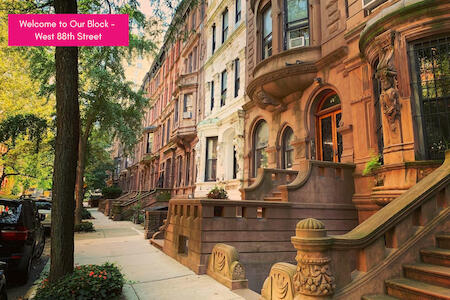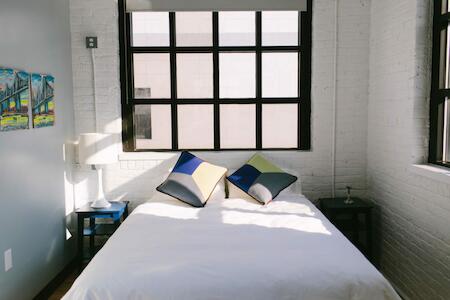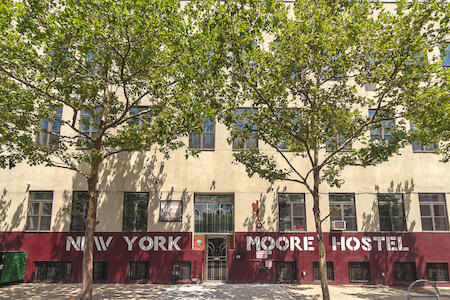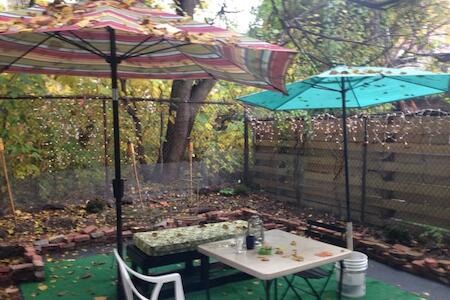Backpacker’s Guide to Central Harlem
Central Harlem has long been one of New York City’s cultural heartlands. Staying at hostels in Central Harlem, Manhattan puts you in a district rich with history, music, and food that has shaped the identity of the city itself. From gospel churches that have filled Sundays with song for decades to murals celebrating legends of the Harlem Renaissance, this neighborhood gives travelers an experience rooted in authenticity.
125th Street is the neighborhood’s backbone. Here you’ll find the Apollo Theater, a timeless landmark where artists like Ella Fitzgerald and James Brown launched their careers. Walk further and you’ll see Sylvia’s, serving soul food since the 1960s, and Marcus Garvey Park, a community gathering spot that’s been here for generations. Choosing hostels in Central Harlem, Manhattan means you’re not just close to landmarks—you’re staying in a district that still carries the traditions of jazz, spoken word, and activism that defined it.
For backpackers, Central Harlem offers something real: the chance to stay in a place where history meets everyday life, with affordable eats, strong community spirit, and direct subway access to the rest of the city.
Transportation
Central Harlem is easy to reach and well connected by subway and bus. Most trains run down to Midtown in less than 20 minutes.
- 125th Street (2, 3 trains): Express to Times Square, Penn Station, and downtown Manhattan.
- 135th Street (B, C trains): Runs along Central Park West, connecting uptown to Columbus Circle.
- 125th Street (A, B, C, D trains): Express options that make traveling across Manhattan simple.
Walking is also a joy here. Central Park is only a short stroll south, and you can explore Harlem’s brownstone-lined side streets and pocket parks on foot. Backpackers often find themselves walking across the neighborhood just to discover new murals, cafés, and local hangouts.
Traveler Essentials
Central Harlem has everything a traveler might need, with plenty of budget-friendly options. Soul food restaurants, Caribbean bakeries, and pizza shops are scattered across the district. Corner bodegas are everywhere, often open late into the night. Larger supermarkets are located along 125th and Lenox Avenue.
Laundromats are common, and Wi-Fi cafés can be found near Frederick Douglass Boulevard and Lenox. ATMs and pharmacies are easy to spot along the main avenues, so running errands is straightforward even if you’re on a short stay.
Evergreen Cultural Notes
Central Harlem’s cultural influence is global. The Harlem Renaissance of the 1920s left a permanent mark on music, art, and literature. Jazz clubs like the Cotton Club may no longer operate, but modern venues keep the tradition alive. Gospel music remains a Sunday staple, with historic churches opening their doors to visitors.
The Apollo Theater continues to host Amateur Night, a tradition since 1934. The Schomburg Center for Research in Black Culture stands as another enduring cultural anchor, preserving stories and voices from across the African diaspora. These landmarks ensure Harlem’s cultural legacy remains relevant, no matter how the city evolves.
Why Stay Here as a Backpacker?
Staying at hostels in Central Harlem, Manhattan means being in a neighborhood with a story. You’ll eat well, travel easily, and find yourself surrounded by cultural landmarks that are timeless. It’s a place where backpackers can experience both the pace of New York and the slower rhythm of community life.
- Direct subway access to Midtown and downtown
- Historic sites like the Apollo Theater and Schomburg Center
- Affordable and authentic food options
- Close to Central Park for free outdoor space
- A cultural history that shapes New York to this day
Summary
For backpackers who want history and culture woven into their stay, hostels in Central Harlem, Manhattan are an excellent base. From gospel choirs to jazz clubs, from murals to the Apollo Theater, the district offers an experience that’s both affordable and unforgettable. It’s not just another stop in New York—it’s a neighborhood where the city’s soul lives on, and where travelers can feel it in every corner.




